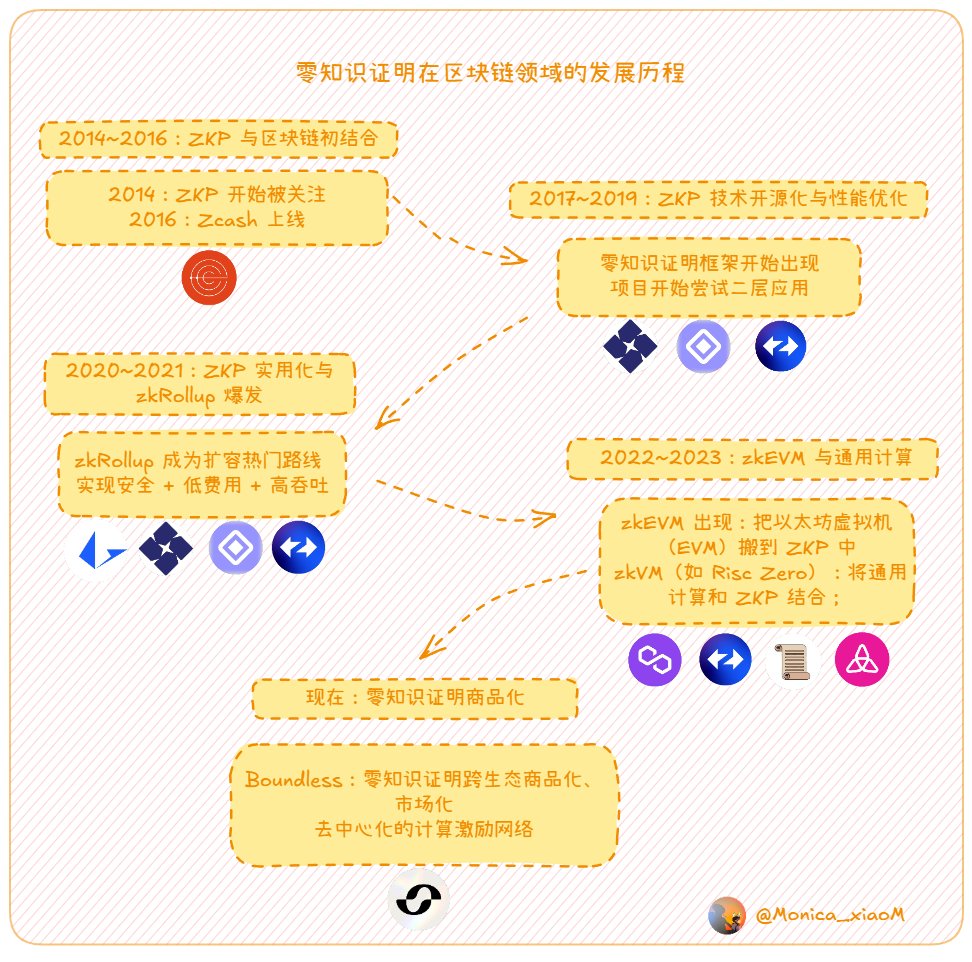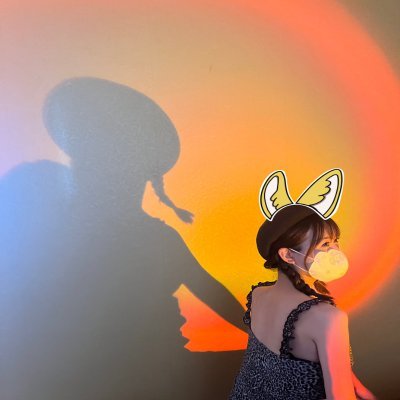"Is ZK the endgame? A visual guide: How zero-knowledge proofs are changing blockchain"
Recently, there has been a wave of projects collectively changing their avatars to join the little penguin trend, which inevitably leads to the association that something is brewing.
The last time this happened was probably with "ZK is the end game," and every Web3 person has at least some understanding or has heard of ZK.
To help everyone better understand the current state of the ZK track, I have compiled the ten-year development history of zero-knowledge proofs and blockchain. The ZK project I am most optimistic about at this stage is @boundless_xyz.
Let's get started!
🗓️ Development history of zero-knowledge proofs in the blockchain field
🔹Phase 1: 2014~2016: Initial combination of ZKP and blockchain
2014: ZKP begins to gain attention
Vitalik Buterin and others start exploring the possibilities of zk-SNARKs in Ethereum; zk-SNARKs are a type of zero-knowledge proof system that eliminates the need for interaction by using public randomness or hash functions, making it more suitable for blockchain scenarios. ZKP is seen as a potential privacy technology.
2016: Zcash goes live (a historic moment)
Zcash is the first project to truly use zk-SNARK on the mainnet, achieving completely anonymous transactions (addresses and amounts are not visible). It relies on a trusted setup.
🔹Phase 2: 2017~2019: Open-sourcing ZKP technology and performance optimization
Zero-knowledge proof frameworks begin to emerge:
Open-source libraries like libsnark and Bellman go live; more projects research how to generate proofs faster and verify them cheaper.
Projects start experimenting with layer two applications:
StarkWare, Aztec, ZKSync, etc., begin researching zkRollup;
StarkWare launches zk-STARK, which does not rely on a trusted setup and is resistant to quantum attacks; Bulletproofs are adopted by Monero for more compact privacy transactions.
🔹Phase 3: 2020~2021: Practical application of ZKP and the explosion of zkRollup
zkRollup becomes a popular scaling route: zkRollup moves a large amount of computation off-chain, only putting proofs on-chain; achieving "security + low fees + high throughput."
Representative projects:
ZKSync: Based on zk-SNARK, supports transfers and transactions;
Loopring: Supports zkRollup DEX;
StarkEx: A high-performance zkRollup engine launched by StarkWare;
Aztec 2.0: Builds a privacy smart contract system using ZKP.
🔹Phase 4: 2022~2023: zkEVM and general computing
zkEVM emerges: moving the Ethereum Virtual Machine (EVM) into ZKP
zkEVM allows developers to continue using Solidity to write contracts; every instruction running on the EVM can be "proven."
Mainstream zkEVM routes:
Polygon zkEVM: Highly compatible with Solidity
ZKSync Era: High performance, gradually increasing compatibility
Scroll: Aiming for compatibility with Ethereum clients
Taiko: Fully equivalent (goal)
Other innovations:
zkVM (like Risc Zero): Combining general computing and ZKP;
zkWASM: WebAssembly + ZKP, expanding Web3 applications.
🔹Current stage: 2024~2025: Engineering, modularization of ZKP, and integration with AI
Various ZKDSLs (Circom, Noir, Leo, Juvix) mature; ZKP toolchains support mainstream languages like Rust, C, Solidity; integration with AI: providing trusted ZK proofs for model inference and data input;
Representative case: Boundless @boundless_xyz: Commercialization and marketization of zero-knowledge proofs, building a decentralized computing incentive network
#Kaito #Boundless @blockTVBee @sanyi_eth_ @wenxue600 @0xNing0x
Show original
23.65K
168
The content on this page is provided by third parties. Unless otherwise stated, OKX is not the author of the cited article(s) and does not claim any copyright in the materials. The content is provided for informational purposes only and does not represent the views of OKX. It is not intended to be an endorsement of any kind and should not be considered investment advice or a solicitation to buy or sell digital assets. To the extent generative AI is utilized to provide summaries or other information, such AI generated content may be inaccurate or inconsistent. Please read the linked article for more details and information. OKX is not responsible for content hosted on third party sites. Digital asset holdings, including stablecoins and NFTs, involve a high degree of risk and can fluctuate greatly. You should carefully consider whether trading or holding digital assets is suitable for you in light of your financial condition.

